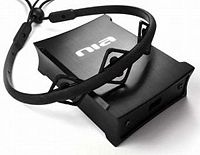Difference between revisions of "Characterization of the NIA signal"
From AIRWiki
m |
m |
||
| (7 intermediate revisions by the same user not shown) | |||
| Line 1: | Line 1: | ||
{{Project | {{Project | ||
|title=Characterization of the NIA signal From AIRWiki Jump to: navigation, search | |title=Characterization of the NIA signal From AIRWiki Jump to: navigation, search | ||
| + | |image=nia.jpg | ||
|short_descr=The NIA system by OCZ provides a very cheap way to get a signal that includes EOG, EMG and EEG. Aim of this project is to characterize it and investigate how could it be used as a substitute of a clinical EEG for non-clinical applications, and as one more signal for affective computing. | |short_descr=The NIA system by OCZ provides a very cheap way to get a signal that includes EOG, EMG and EEG. Aim of this project is to characterize it and investigate how could it be used as a substitute of a clinical EEG for non-clinical applications, and as one more signal for affective computing. | ||
|coordinator=AndreaBonarini | |coordinator=AndreaBonarini | ||
| − | |tutor=MatteoMatteucci; | + | |tutor=MatteoMatteucci; |
| − | |students=GiulioValenti; | + | |students=GiulioValenti; |
|resarea=BioSignal Analysis | |resarea=BioSignal Analysis | ||
| − | |restopic=Affective Computing And BioSignals; Brain-Computer Interface; | + | |restopic=Affective Computing And BioSignals; Brain-Computer Interface; |
|start=2010/10/15 | |start=2010/10/15 | ||
| − | |end= | + | |end=2011/10/2 |
| − | |status= | + | |status=Closed |
|level=Ms | |level=Ms | ||
|type=Thesis | |type=Thesis | ||
| Line 15: | Line 16: | ||
This project borns from a direct collaboration with Andrew Junker, the designer of NIA [[http://www.ocztechnology.com/products/ocz_peripherals/nia-neural_impulse_actuator NIA]] by OCZ. | This project borns from a direct collaboration with Andrew Junker, the designer of NIA [[http://www.ocztechnology.com/products/ocz_peripherals/nia-neural_impulse_actuator NIA]] by OCZ. | ||
| − | [[ | + | A first application of [[HeadsetControlForWheelChair|NIA to control]] a [[LURCH - The autonomous wheelchair|wheelchair with shared autonomy]] was implemented by [[user:RobertoVandone|RobertoVandone]] |
| − | + | ||
| − | + | ||
Latest revision as of 18:05, 3 October 2011
Characterization of the NIA signal From AIRWiki Jump to: navigation, search
| |
| Short Description: | The NIA system by OCZ provides a very cheap way to get a signal that includes EOG, EMG and EEG. Aim of this project is to characterize it and investigate how could it be used as a substitute of a clinical EEG for non-clinical applications, and as one more signal for affective computing. |
| Coordinator: | AndreaBonarini (andrea.bonarini@polimi.it) |
| Tutor: | MatteoMatteucci (matteo.matteucci@polimi.it) |
| Collaborator: | |
| Students: | GiulioValenti (giovenale2@tin.it) |
| Research Area: | BioSignal Analysis |
| Research Topic: | Affective Computing And BioSignals, Brain-Computer Interface |
| Start: | 2010/10/15 |
| End: | 2011/10/2 |
| Status: | Closed |
| Level: | Ms |
| Type: | Thesis |
This project borns from a direct collaboration with Andrew Junker, the designer of NIA [NIA] by OCZ.
A first application of NIA to control a wheelchair with shared autonomy was implemented by RobertoVandone
